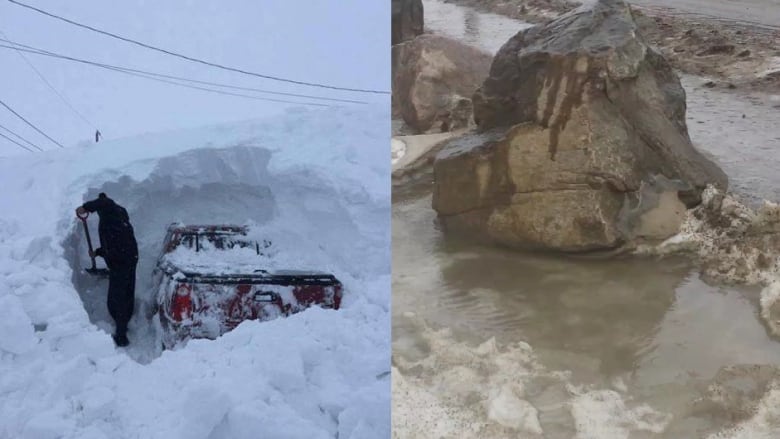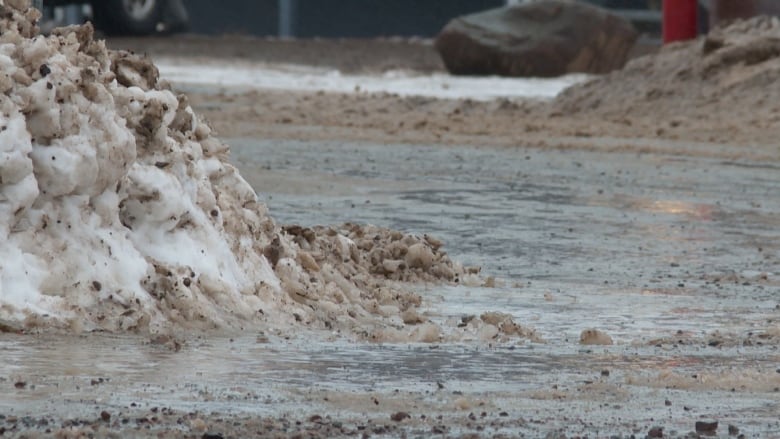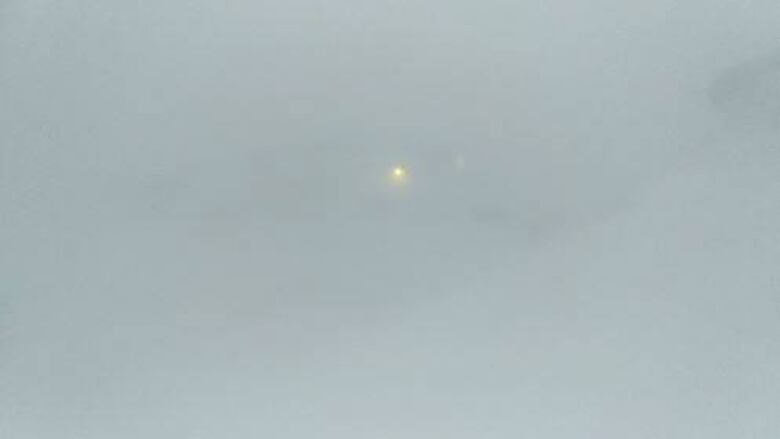'It's wild': Wacky weather in Nunavut breaks records
'Nature seems confused,' says senior climatologist with Environment Canada

Blizzards, 140 km/h wind gusts, and rain?
Many regions of Nunavut experienced "strange" weather overthe past few days, causing sea cans to fly through one community and muddy puddles in another.
"It's wild," said David Phillips, a senior climatologist with Environment and Climate Change Canada.

It all began last weekend.
A very "potent, powerful low pressure" system centred around the HudsonBay area "just wound up like a top," says Phillips.
"And it just brought a lot of blistery and gusty winds to the North."
The easterly winds moved North towards Baffin Island.
Gusts of 120 to 140 km/h ripped through Pangnirtung, which Phillips said were near record-level winds for the community.
Iqaluit saw near 100 km/h winds, which caused closures across the city, from schools to government offices to many local businesses.
Puddles and ice
Then things took a wet turn in the capital Tuesday, when it saw "temperatures just rocket up there well above freezing," said Phillips.
Rain showered Iqaluit much of Tuesday with a high of 3.5 C a record-breaker for Nov. 21 for the city. The previous record was back in 1962 when temperatures reached 0.6 C.

The rain turned to freezing rain and turned some areas of the city, like the airport, into an ice rink by Wednesday.
- Iqaluit gets a month's worth of rain in 9 days
- 'Seemingly unbelievable' temperatures becoming more common in Arctic winters
Phillips also noted that parts of Nunavut were warmer than Toronto, which had a high of 1 C Wednesday.
"My gosh,you would never tell Canadians at this time of the year, if they wanted warm temperatures, to head to the North!"
Winds died down south of the territory by Wednesday, but communities like Grise Fiord were under weather warnings, with winds of 90 to 120 km/h.
Meanwhile, communities in the Kivalliq region have beenmet with blizzards, causing white-out conditions. Baker Lake had zero visibility Wednesday.

The culprit?
"It's all the same weather system, but it just has different components depending upon where you live," said Phillips.
Should people be worried?
The normal high for Baffin Island should be around -11 to -13 C this time of the year, says Phillips.
But communities are seeing typical September temperatures now, five to eight degrees warmer than what's normal for November, and an unusually mixed bag of precipitation.

"This seems unreasonably warm nature seems confused," said Phillips.
But Phillips says people shouldn't worry.
"I think this maybe should be looked upon as just making winter a little shorter," he said, adding that the warmth is from a "heat pump" from the south.
"I always say, enjoy the weather, but be concerned by the climate," he said.
Phillips said the current system will weaken and die down eventually.
He described the system as "little jokers in the weather deck" a great conversation starter.
"I am sure it is on the lips of everybody in Iqaluit, and Baffin Island, is 'what's with that weather?' and some people are cursing it, and others are blessing it."












_(720p).jpg)


 OFFICIAL HD MUSIC VIDEO.jpg)
.jpg)



























































































